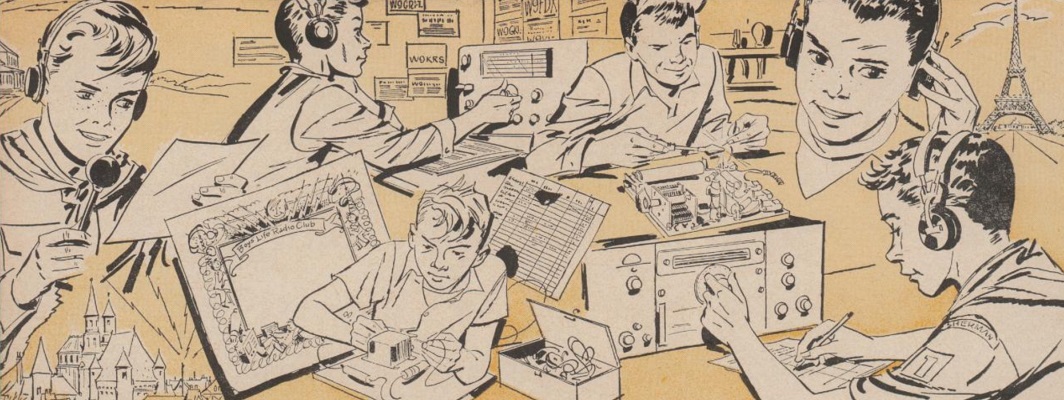I have put in some serious time trying to get the ham shack back in usable order. A lot of progress has been made.
(1) The shack computer has been replaced with a new Shuttle DS77U. Not a fancy, powerful computer but what I really enjoy is that it is small (slightly smaller than a cigar box (remember as a kid when you had a cigar box to keep your treasures)) size and that it is fanless (which equals quiet). It took a few iterations to settle on a linux distribution and to get fldigi and wsjtx working properly. During one of my test iterations I had xastir up and working (kinda of). I was able to pair it with the TM-D710A and it worked for transmitting, receiving, and plotting APRS signals. My failure was in getting the maps to work. Ends up it was an installation issue on my part. My end goal is to get xastir working on a separate linux box, possibly working with my Davis Vantage Pro2. I have seen very few clean, direct implementations of pairing xastir with a Davis Vantage Pro2… so, we’ll see. The other problem was tqsl or the software that runs LOTW. During one of my trial iterations, I had fldigi configured to log every completed contact directly to LOTW – it was great! It was challenging trying to install the latest version of tqsl and get it working properly. The version that is available in the repositories is outdated. The version available for ARRL is difficult to work with (using some distributions) due to dependencies. I had a great deal of success using the latest version of Linux Mint (19.3) which already had all the needed dependencies for tqsl. Now when I log a contact into fldigi’s logbook, it gets immediately uploaded to LOTW. It would be nice if wsjtx did the same, but it is no big deal to sign and upload that log later. All that being said, the shack computer is working nicely for what I need to have the basic functions to get on air.
(2) Selling off gear I don’t need. One of the factors that made the shack uninhabitable was all the excess stuff. I started selling gear off using QRZ.com’s forum. The gear is doing me no good, so it makes sense to lighten the load here. Up to this point I have listed and sold a Bencher BY-1 black-based paddle and two QRP kits I had sitting on the shelf. Next up will be the IC-92AD with all the bells and whistles (drop in charger, DV access point dongle, four batteries, the Nifty manual, the GPS speaker mic, plus the original box. What I like about the IC-92AD is its construction. The chassis is diecast aluminum, so the feel is solid… not something you get with the vast majority of HTs. I enjoyed using this HT from the indoors, using the dual band capability to monitor both my EchoIRLP node and D-STARS. I don’t do that anymore, so I think it is time the IC-92AD goes. I also found an old unbuilt NorCal 40a kit that includes a theory book on electronics. And it is also time to get rid of the FT-817ND that is tricked out with about every modification and additional gadget you could think of. There is a Bencher BY-2 that needs a new home. I also have maybe a half dozen unbuilt kits. Some I am unsure exactly what they are, although still in their original packaging. Many are from the now shuttered Small Wonders Lab. I am going to have to take some pictures of the ones I don’t recognize to see if I can figure out exactly what they are.
(3) Now the biggest issue that faces me is antenna improvement. Currently deployed in the trees off to the side of the house is a Radio Works G5RV. How sad I was to learn that Radio Works has also closed its doors. I was introduced to Radio Works when I lived in Hampton Roads, them being based in Portsmouth. Man they made great antennas. I still have one of their Carolina Windoms that I would like to put up. The G5RV needs to be replaced. It has made it through many Kansas winters and is ready to be retired. In cleaning the shack, I have pulled together all the odds and ends for hanging and installing antennas and I have everything I need on hand. Time to make it happen.
In non-shack news, I was going to replace the XYL’s TM-D710A with a D710GA, as well as a new motor to raise/lower the antenna. The antenna motor install was accomplished without issue. I attempted to install the D710GA without first testing it in the shack = mistake. Ends up the a-side control pot for volume/squelch was bad. As I purchased the rig as a Christmas present, I didn’t test it within the 14 day period required by Gigaparts in order to get the rig directly replaced. Instead, I have to send it in for warranty repair. Hopefully that goes smooth.
I am also hoping to have exciting news tomorrow. Keep your fingers crossed.
